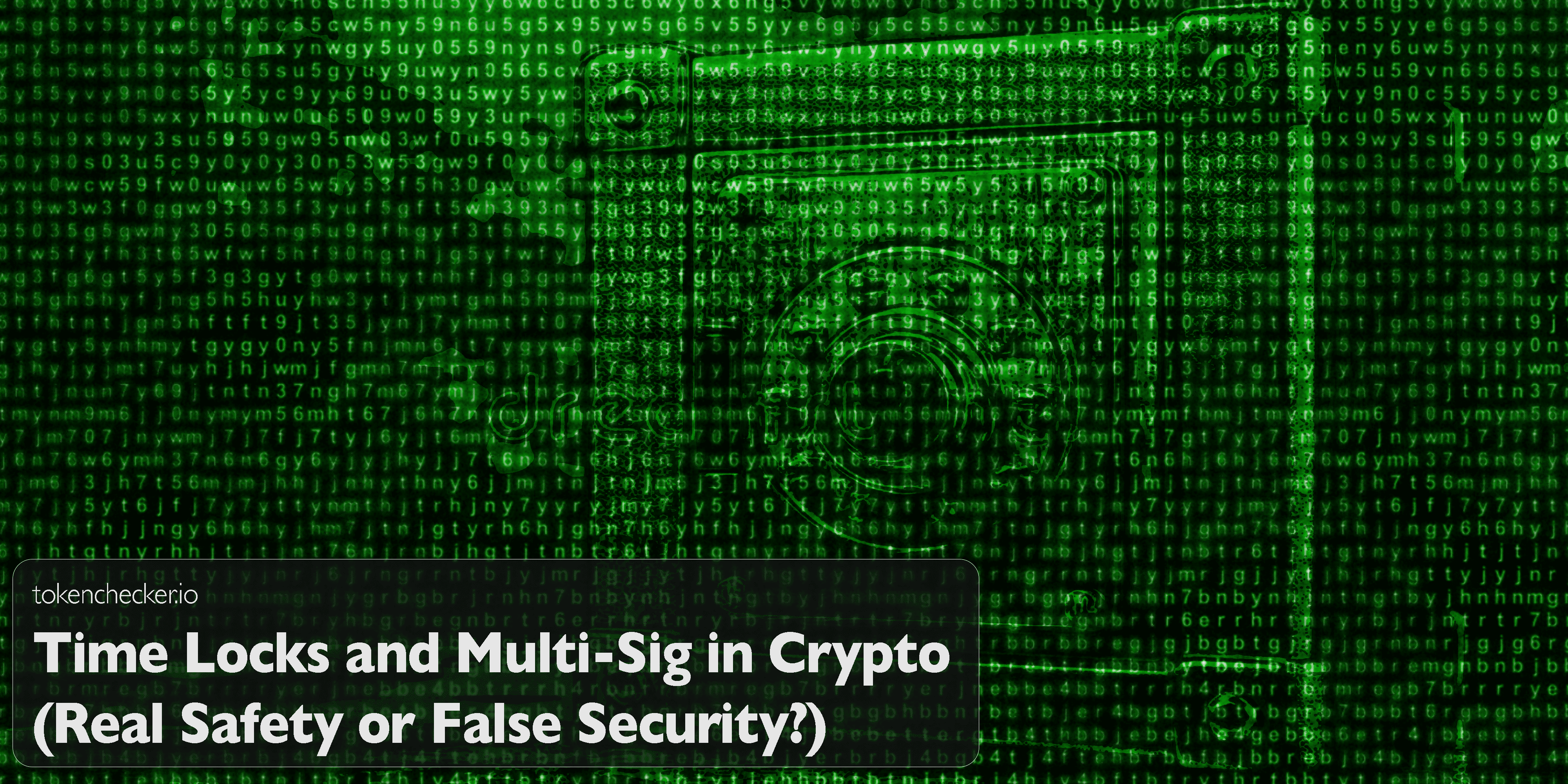
Time Locks and Multi-Sig in Crypto (Real Safety or False Security?)
Introduction
You hear it all the time: “Our contract is time-locked.” Or, “We use a multi-sig wallet for added protection.” These phrases are supposed to make you feel safe. Like there’s a wall between your money and a developer's bad intentions.
But here’s the uncomfortable truth just because a project uses time locks or multi-signature wallets doesn’t mean it’s secure. In fact, these features can create a false sense of safety, especially when the team behind them controls everything anyway.
Let’s break down how these tools work, when they actually help, and when they’re just part of the show.
What Is a Time Lock in Crypto?
A time lock is a smart contract mechanism that delays certain actions like token releases, liquidity withdrawals, or contract upgrades. You set a timer, and until that timer expires, the function can’t execute.
In theory, it’s great. It gives the community time to react if something sketchy is about to happen. Think of it like a delayed detonation switch.
But here’s the kicker: if the same devs who wrote the contract can change the timer, or cancel the delay entirely, then it’s just cosmetic. It looks like a safety feature but the power still rests with a small group, or worse, one person.
Multi-Sig Wallets: Security in Numbers?
Multi-sig (short for multi-signature) wallets require multiple private keys to approve a transaction. Instead of one person controlling the funds, it might take 2 out of 3, or 4 out of 7, to move assets or execute smart contract functions.
Used right, multi-sig reduces single points of failure and prevents rogue actions.
Used wrong, it’s meaningless. If all the signers are the dev’s alt wallets, or if all 5 members are friends in a Telegram group with no legal accountability, then what’s the difference? You still have centralization just in disguise.
When Security Theater Replaces Real Safety
Security theater happens when a project adds protective features that look impressive but don’t hold up under real pressure. It’s the crypto version of having security guards who don’t check bags.
Common signs of security theater:
- The time lock delay is too short to matter
- The multi-sig setup is controlled by insiders
- No one publishes signer identities or key revocation rules
- Upgradeable contracts with no transparency around admin keys
- "Locked" liquidity that can still be drained via backdoors
These setups trick investors into thinking there's protection until it's too late.
Real Security Needs Real Process
If a project is serious about protecting users, here’s what you should actually see:
- Transparent time lock config: Clear delay times, immutable if possible
- Named multi-sig signers: Not just wallet addresses verifiable people or orgs
- Rotation and revocation: Plans in place to update signers if someone disappears
- Public upgrade proposals: With lead time and community review
- Independent audits: Not just from “friends of the project”
tokenchecker.io tracks this kind of detail. It flags suspicious multi-sig setups, time locks that can be edited post-launch, and contract functions that override security features. Because it’s not just about what’s claimed it’s about what’s coded.
Why Even Good Tools Can Still Fail
Here’s a hard truth: time locks and multi-sigs can’t save a project from its own team.
If the team is dishonest or poorly organized, they’ll find a way around these tools. We've seen:
- Devs collude to approve malicious upgrades
- Time locks set just long enough to rug during low activity hours
- Emergency withdrawal functions buried in unverified contracts
- "Accidental" admin key leaks… right before the treasury vanishes
In the end, it’s not just about tools it’s about trust, transparency, and decentralization. Without those, all the security in the world is just set dressing.
What You Can Check as an Investor
You don’t have to be a Solidity expert to spot weak setups. Ask these questions:
- How long is the time lock? Can it be changed?
- Who holds the keys to the multi-sig? Are they doxxed and verified?
- Are contract upgrades possible? Who controls that power?
- Is the security setup clearly explained in the docs or website?
- Has the project ever rehearsed an emergency? (Most haven’t)
And most importantly has it been analyzed by tokenchecker.io?
Because that platform doesn’t just look at surface claims. It checks contracts, holders, admin rights, and liquidity controls to see if the project is actually locked down… or just pretending.
Final Thoughts
Time locks and multi-sigs aren’t bad. They’re tools and like any tool, they’re only as good as the people using them.
The best projects use them transparently, with checks, balances, and community oversight. The worst ones use them as marketing. They throw in a short lock delay or a three-of-three multi-sig and call it “rugproof.”
Don’t fall for the badge. Look under the hood. Use tokenchecker.io to verify what’s real and what’s theater.